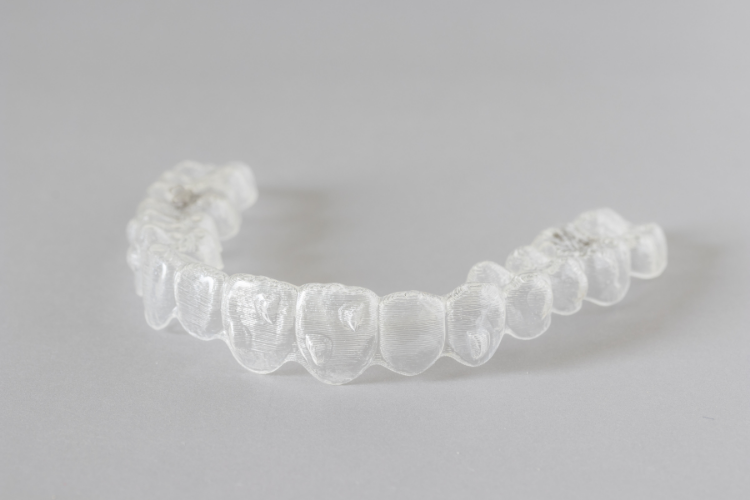
Are the most commonly used appliances and are able to produce very precise tooth movement to achieve ideal results. Treatment with fixed appliances usually starts once all the adult teeth have erupted and usually lasts for 18-24 months. All fixed appliance treatment is followed by retention. Traditionally they were consist of stainless steel attachments and wires. Nowadays,the attachments may be made from a hard ceramic material to blend in with the tooth colour. This produces a more aesthetically pleasing appliance which is more of an attractive option particularly for adults. The orthodontic wires can also be tooth coloured to help improve the appearance further. Ceramic fixed appliances can be as effective as conventional fixed appliances at achieving tooth movement. Sometimes they are not recommended for the lower teeth, if the bite is deep, because the hard material can damage the opposing teeth that contact the attachments. Ceramic appliances are slightly more difficult to remove than conventional fixed appliances, however, they are unlikely to damage healthy teeth in most cases. Any concerns should be discussed with your orthodontist.
Are attached to the inside surface of the teeth which makes them invisible to the outside world. Many orthodontists offer these systems and they are capable of producing high quality results. Particular problems that maybe encountered with lingual appliances include initial difficulty in speaking, tongue soreness and problems in keeping the appliances clean. The cost of treatment with lingual appliances is considerably more than the appliances mentioned so far which reflects the greater laboratory fees in producing the appliance and the increased surgery time required in the adjustments.
Are a relatively new way of correcting mild-moderate orthodontic problems following a comprehensive assessment and discussion of the all the available options.
“Invisible” removable aligners are perhaps the highest profile orthodontic appliance, with widespread advertising in magazines and television. Whilst they have become increasingly sophisticated and refined it remains important to be clear about the circumstances in which these devices are best used and by whom. It is important to seek an opinion from an orthodontic specialist who will be able to give authoritative advice on the options. After any aligner treatment, retainers will be required to ensure the teeth maintain their corrected positions.
Aligners are thin clear flexible plastic ‘mouthguards’ which fit closely over the teeth. A series of aligners is used to move the teeth incrementally according to a treatment plan developed by the orthodontist. Aligner appliances are ideally suited to adult patients whose life-style or work commitments make it difficult for them to wear more visible conventional fixed appliances.
As with any other form of orthodontics, a proper orthodontic assessment, diagnosis and treatment plan is essential to successful aligner treatment. An accurate impression of the mouth is used to create the customised aligners. Each appliance moves the teeth a small distance towards the intended position before moving on to the next in the series until the final result is achieved. Aligners need to be worn full-time, day and night except for meal times.
Aligners are most commonly used in cases needing alignment of teeth without extractions. Routine aligner treatments include:
The following cases are examples of when an aligner treatment may require the use of additional techniques such as fixed appliances to achieve an ideal result:
All rights reserved for British Orthodontic Society; Source: British Orthodontic Society > Public & Patients British Orthodontic Society > Public & Patients
BACK TO News and Update
 View all Treatments
View all Treatments


we accept all insurance including